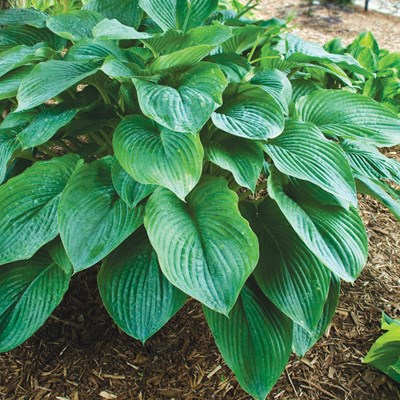EVERY year the nursery industry releases new plant varieties to satiate the consumer's desire for new and more beautiful plant choices.
The trend of releasing previously green-leaved plants as new plants but with variegated leaves does little for me, but many gardeners enjoy the year-round colour influence such plants provide in the garden.
There are also a wide range of new climbing vines, dwarf flowering shrubs, summer annuals and floriferous perennials released into the market each year.
Only time will tell if any new plant introduction survives to become the sweetheart of consumer taste.
For me, new plants are worth trying when they are really something unusual and not just another flavour of the month. For those of you looking for a new plant in the garden, here are a few choices that hold promise.
From Heritage Perennials, a Canadian company based in Abbotsford, comes an unusual and potentially useful clematis unlike all others. Clematis Bijou has blue-mauve flowers, faintly striped in dark pink growing up to nine centimetres (3.5 inches) across and borne abundantly on the wiry stems. What's unusual about Bijou is its ground-hugging habit, growing 30-60 cm (12-24 inches) in height and not really a climbing plant at all. It is planted as a ground cover, accent, in containers or baskets or as a specimen plant.
Picture the same large flower seen on other traditional clematis but growing on a shrublet of plant that is growing in the garden border in the foreground or near the bed edge. Now, that's really something unusual and worth trying, especially if it lives up to its claim of blooming from early summer until mid-summer with a few straggler flowers in late summer.
Bijou should be planted in reasonably good soil, in full sun even though it's reported to tolerate light shade. Amend the planting hole with good rich compost or manure to fertilize the organic way. Mulch after planting to protect its roots. Water well during summer heat to produce healthy, long-lasting blooms.
If you like big bold foliage like I do, then Hosta Empress Wu is worth trying.
I first heard about this plant from a friend of mine who said its leaves are big enough to use as a small umbrella. The dark green leaves have strong vein patterns and can grow up to 45 cm (18 inches) across.
This clump-forming hosta can grow 120 cm (47 inches) tall and 180 cm (70 inches) wide, making it a monster foliage plant worthy of a place in the mixed border, as specimen plant, in the woodland or near a water feature. The pale reddishmauve flowers are borne in mid-summer and rise above the foliage.
Like most other hostas, Empress Wu prefers part shade to full shade while growing in average to good soil. And with a leaf that big, planting in an area with naturally moist soil would be beneficial.
Amend the planting hole with good rich compost or manure to fertilize the organic way. Mulch after planting to protect the roots. Water well during the summer heat to keep those big leaves flush and healthy looking.
For the summer garden, in baskets and pots nothing provides constant colour like the Superbells series of annual plants.
Superbells (Calibrachoa hybrid) are my choice for petunia replacements in hanging baskets and pots because they withstand our sometimes rainy summers with little affect to the flowers, unlike petunias that turn to mush when the first rainfall hits their flowers.
The newest Superbells release is called Grape Punch and it produces an abundance of purple, loonie-sized flowers all across the wiry little stems. Grape Punch grows 15 to 20 cm tall (6 to 8 inches) but the stems will trail down 30 cm (12 inches) or more.
Superbells need full sun to bloom their best and they do not require deadheading. These heat and drought tolerant little charmers look good in hanging baskets, pots and atop retaining walls.
I have not tried them as mass planted bedding plants but they would only work for that purpose if the soil was free draining in full sun and located in an open position.
Calibrachoa starts blooming in late spring and blooms until frost, making it reliable for producing summer colour in the garden.
Allow Superbells to dry out between watering them because they will suffer root rot if they are over-watered.
They do appreciate a bit of fertilizer periodically through the summer to keep them flourishing but excessive fertilization will cause them to grow soft and suffer pest and disease problems, so keep fertilization to reasonable levels.
During mid-summer, Superbells - like many other annuals - can begin to slow down and look tired. If this happens, just trim them back and fertilize lightly to force a new flush of growth to carry on the colour into the fall.
Todd Major is a journeyman horticulturist, garden designer, writer, consultant and organic advocate. For advice contact him at [email protected].



